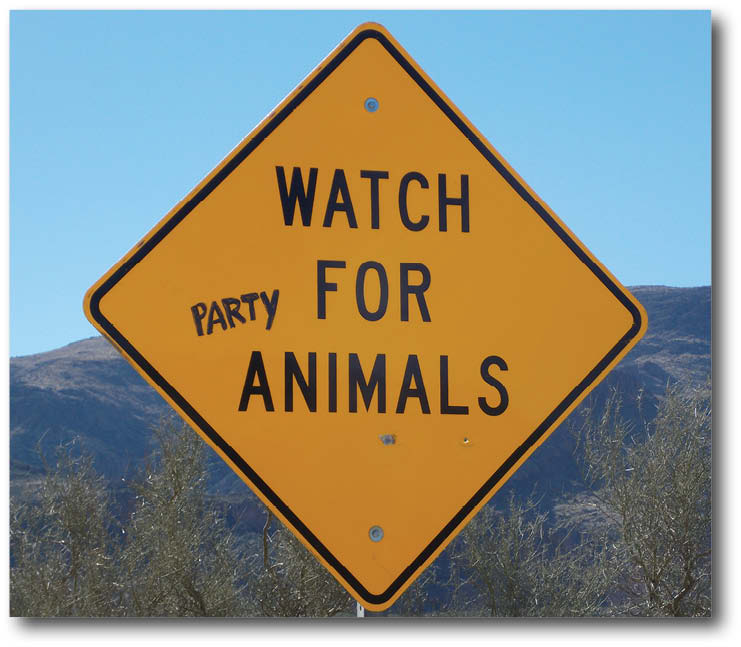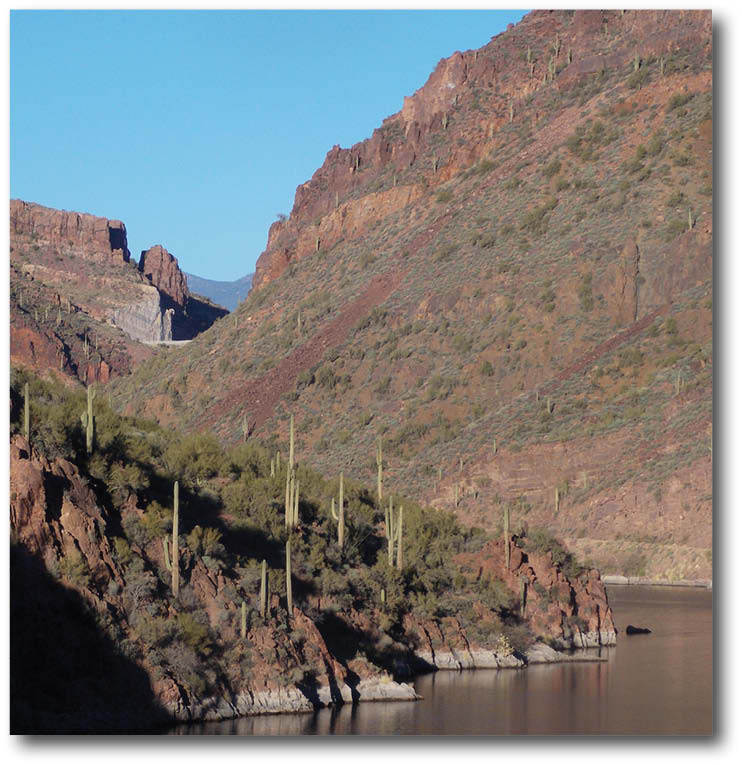Special to the Nugget
On a beautiful sunny day I embark upon the Apache Trail intending to join a friend for a kayaking adventure. I was looking forward to the scenic drive along the narrow twisting road. I headed east out of Phoenix and in Apache Junction I turned onto the Apache Trail. The road begins by winding through the foothills of the Superstition Mountains. Alongside the road are several charming businesses trying to capitalize on the fame of the Lost Dutchman Gold Mine before the road slowly climbs the desert ridges, quickly becoming more precarious as it twists and winds.
The road is beautiful here, rolling between saguaros and wildly sculpted mountains. After one particularly steep and curvy section we crest a hill and gain our first view of Canyon Lake. Canyon Lake is a beautiful and unexpected flat blue expanse of water stretching across a desert landscape. This desert landscape would still be beautiful without the lake but having all that precious water nestled between the picturesque cliffs and surrounded by saguaros makes it special indeed.
Canyon Lake exists because Mormon Flat Dam holds back the Salt River and creates the lake. In her book Don’t Let the Sun Step Over You, Eva Tulene Watt describes her father helping to build that dam. As a child, she and her family moved from camp to camp, as her father and other family members worked on building the Apache Trail. Eva Tulene Watt is a member of the White Mountain Apache tribe and not many people realize that The Apache Trail wears that name because it was built using mainly Apache labor.
The Tulene family adventure began at the town of Roosevelt. In 1911, imported Italian stonemasons finished Roosevelt Dam, creating the world’s highest masonry dam. The town was built and businesses were established to service the construction crews necessary to build the dam and construct the road. Roosevelt was built knowing that one day the entire town would be flooded beneath the lake it was creating but for a time the town was flanked with wickiups holding the families of Apache workers and their families.
Ms. Watt’s father and brother accepted jobs on the Apache Trail while other Apache men declined stating, “’That road goes a long ways. It’s gonna take us too far from home.’ We followed that road, Apache Trail, for about two years. It goes all the way from Roosevelt to Apache Junction. The road was real narrow – it’s real rough too – so they were making it bigger and smoother (Author’s note – The Apache Trail is still real narrow and rough). It’s hard work! It’s not by machine, just pick and shovel, that’s all they used to make that road. And dynamite too, they used a lot of dynamite. When the workers made the road as far as one mile, we moved the camp and went to the next one. That’s how we used to do.”
The road crew boss had a Model T Ford that he used to drive to Roosevelt or Globe and fill everybody’s grocery lists. As much as possible Ms. Watt’s mother fed the family by harvesting whatever wild foods were available such as mesquite beans, mescal (nadal), prickly pear (hosh nteele’), saguaro fruit and bits of thistle (ko’ dahosh) which she claimed tastes like asparagus. Saturdays and Sundays were days off for the road crew and the Apaches would gather in the shade of the cottonwood trees and play cards. Ms. Watt’s mother made extra money selling a venison and potato stew. Her mother sold out every weekend but laughed, “What am I gonna do with this money I got? There’s no stores, there’s no place where I can buy something.”
One of the more infamous spots along the Apache Trail is FishCreek Hill. Although one of the most scenic spots along a scenic road, the pavement has long turned to dirt here and the hill is extremely steep, rough and treacherous. Many people such as myself have stories about trying to reach one of the Salt River Lakes on a busy holiday weekend and having to park and wait while two drivers of RVs towing boats get out and debate who will back up this dangerous stretch of road so the other can pass. Here at Fish Creek Hill the Apache had an interesting encounter. As the road progressed to Fish Creek Hill many Apache were eager to camp along the creek in the shade of the trees. The camp was ambushed in the middle of the night by an infestation of garter snakes. Ms. Watt’s Aunt Bessie along with several other Apache came running up the hill shrieking in terror. She was terrified because one of the snakes had wrapped itself around her leg. As some people tried to gather their things before fleeing up the hill, Ms. Watt’s father had sage advice, “Leave the pots and pans let the snakes cook their own dinner.”
Not just Apache worked the trail but at least one Apache scout was employed as well. Al Sieber was perhaps the most famous of General Crook’s scouts. A seasoned battle veteran, Sieber survived both the Civil War and the Apache Wars only to meet his demise working road construction when a large boulder toppled on top of him. A monument has been built honoring his service on the edge of Lake Roosevelt.



